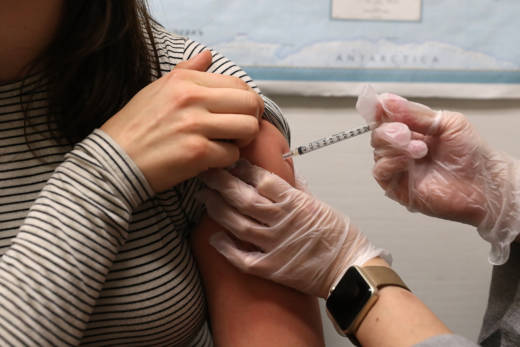“This is important for policymakers because it indicates that metropolitan areas should focus on reducing influenza spread, whereas small towns should focus on reducing harm,” Wallinga wrote in a commentary on the paper, which was published alongside it Thursday in the journal Science.
Influenza is famously unpredictable. It’s not uncommon to hear people who have studied it for decades describe the virus as “humbling.”
Experts know there will be a surge of influenza infections at some point in the year; in the Northern Hemisphere that period typically falls in the stretch from late autumn through late winter or early spring. But some years the peak of infections will occur over Christmas and other times the sickest point in the season will come in late February or even March.
It’s not fully understood why flu behaves this way. Time spent indoors during the winter, when their immune systems may not be as robust, is thought to be a factor.
Dalziel and his co-authors set out to look at the role specific humidity levels — how much moisture there is in the air — play in flu transmission. They used a large amount of data: weekly health insurance claims from people who sought care for influenza-like illness. The researchers had data by ZIP code for six years, from 2002 to 2008, for roughly 603 cities in the United States.
What they saw was that in small cities, the curve of a flu season was sharp. Regardless of whether a lot of people got sick in a flu season or whether fewer were struck in a particular year, most of the infections occurred over a short period of time, making for a “spiky” epidemic curve.
But the pattern in large cities was different. The curve was lower and longer — more diffuse. It didn’t mean that fewer people got sick, but that infections were spread out over a longer period of time.
It meant that flu viruses were still able to spread from person to person in large cities even when climatic conditions weren’t ideal.
Dalziel, who admitted the big-city pattern wasn’t what he and his colleagues were expecting, said the small city outbreaks were “explosive” while the big city epidemics “smoldered.”
Their conclusion was that specific humidity didn’t matter as much in places where large numbers of people live.
“The flu is able to spread under a wider envelop of climatic conditions in the metropolises, because of highly organized movement patterns that put people into such close proximity that the specific humidity starts to matter less,” Dalziel said. “In metropolises, flu is able to eke out a living because there’s more highly organized close contact.”
Seema Lakdawala, who studies influenza transmission, described the finding as fascinating.
“What they’re showing is that the transmission dynamics within intense urban areas is more perpetual,” said Lakdawala, an assistant professor in the department of microbiology and molecular genetics at the University of Pittsburgh School of Medicine.
Lakdawala studies how the flu virus is transmitted — through droplets of saliva or mucus that can only travel short distances, or through aerosols, which can hang in the air longer. Her read of this study suggested to her that in smaller places, aerosolized viruses may play more of a role in transmission, and those may be more dependent on climatic conditions. But in large centers where people are more densely packed, transmission over short distances — which is less climate-dependent — can get the job done.
“Since I’ve been thinking about the importance and the contribution of short-range versus long-range transmission for so long, to me it really fits,” said Lakdawala, who was not involved in the research.
“In intense urban areas, we’re indoors more often. So this idea that there is transmission occurring universally, constantly, in these environments that isn’t necessarily driven by seasonality of humidity is really fascinating,” she said. “And it really fits with what we think is happening — that these long-range transmission events may be more sensitive to humidity conditions, and they may be happening more in less populated areas.”
This story was originally published by STAT, an online publication of Boston Globe Media that covers health, medicine, and scientific discovery.

